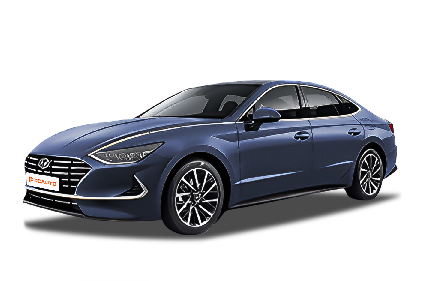Q
Where are Hyundai Sonata's engines made?
The information about the origin of Hyundai Sonata's engines isn't clearly provided. Generally, Hyundai has many production bases around the world, and the engines might be manufactured in different regions. As a global automotive brand, Hyundai produces engines in appropriate locations to meet the needs of different markets and optimize its production layout. For example, there could be engine production plants in the countries and regions where its main production bases are located. Some common production locations may include South Korea and some overseas factories. To find the origin of a specific Hyundai Sonata engine, you can check the Vehicle Identification Number (VIN) or the information on the nameplate by the passenger - side door. If the front part of the VIN starts with a specific code, it might indicate a particular origin, and the nameplate also clearly states detailed information such as the engine manufacturer.
Special Disclaimer: This content is published by users and does not represent the views or position of PCauto.
Related Q&A
Q
What is the life expectancy of Hyundai Sonata Hybrid?
The service life of the Hyundai Sonata Hybrid can vary depending on multiple factors. Generally speaking, the battery of the Sonata Hybrid usually lasts about 5 years. As for other components, Hyundai offers a 5 - year or 300,000 - kilometer warranty for the whole vehicle, which reflects the expected durability of the vehicle under normal use conditions. The warranty periods for some core components, such as the power battery assembly, drive motor assembly, motor controller assembly, and vehicle controller assembly, are even longer, sometimes up to 8 years or 150,000 kilometers. Regular maintenance, good driving habits, and usage conditions all play important roles. If properly maintained, serviced on time, and driven carefully, this car has the potential to serve you for over 10 years and cover a mileage of as much as 200,000 kilometers or more.
Q
Which model of Hyundai Sonata is the most expensive ?
Currently, the most expensive model of Hyundai Sonata in Malaysia is the Sonata N-Line version, with an official price of approximately RM218,888 (excluding insurance). This high-performance version is equipped with a 2.5L Turbo GDi four-cylinder engine, capable of outputting 290 horsepower and 422 Nm of torque. Paired with an 8-speed wet dual-clutch transmission and front-wheel drive, it can accelerate from 0 - 100 km/h in just 6.2 seconds.
Compared with the standard Sonata (equipped with a 1.6L Turbo or 2.0L naturally aspirated engine), in addition to its powerful performance, the N-Line is equipped with a sport-tuned suspension, 19-inch wheels, an exclusive N Line exterior kit (including a more aggressive aerodynamic design and quad exhaust pipes), and an all-black interior with red stitching, giving it an overall sporty coupe style.
Although it's price is high, the N-Line version offers a comprehensive configurations, including the advanced Hyundai SmartSense active safety system (such as SCC Smart Cruise Control and FCA Forward Collision Warning), a panoramic sunroof, and a Bose sound system. It's a great choice for consumers who seek both performance and luxury.
Q
How about the speed performance of Hyundai Sonata?
The speed performance varies among different models of the Sonata. The top speed of the 2020 Hyundai Sonata 2.5 Premium can reach 210 km/h, while the top speeds of the 2017 Hyundai Sonata 2.0 Elegance and Hyundai Sonata 2.0 Executive are 200 km/h. These figures reflect the vehicle's potential in terms of power performance. However, in actual driving, it's difficult to reach the vehicle's top speed due to factors such as road conditions, traffic regulations, and driving behavior. For example, the speed limits on ordinary city roads are usually quite low. Although the speed limits on highways are relatively higher, it's not allowed to speed at will. It is recommended that everyone abide by the regulations while driving, reasonably control the speed according to the actual situation, and ensure driving safety.
Q
What's the engine displacement of Hyundai Sonata?
Different models of Sonata have various engine displacements. For example, the 2020 Hyundai Sonata 2.5 Premium is equipped with an engine with a displacement of 2497cc, which can provide ample power to meet the needs of daily driving and some driving scenarios with power requirements. As for the 2017 Hyundai Sonata 2.0 Elegance and Hyundai Sonata 2.0 Executive, their engines have a displacement of 1999cc. Relatively speaking, they may perform better in terms of fuel economy and can also provide stable power output for the vehicle. Engines with different displacements each have their own characteristics. Consumers can choose the model that suits them according to their own driving habits, such as the demand for power and considerations regarding fuel consumption.
Q
What's the service life of Hyundai Sonata's spark plugs?
The service life of the Hyundai Sonata's spark plugs depends on their types. The more affordable nickel alloy spark plugs typically last about 20,000 - 30,000 kilometers. Platinum spark plugs, with better heat and corrosion resistance, can be used for 60,000 - 80,000 kilometers. Iridium spark plugs, known for their high ignition performance, usually have a service life of 80,000 - 100,000 kilometers or even longer.
However, other factors can also have an impact. If the vehicle often drives under harsh conditions such as extreme temperatures, high humidity, and dusty areas, or experiences frequent starting and stopping, the spark plugs may wear out more quickly. Aggressive driving habits like rapid acceleration and hard braking can also increase the engine load and accelerate the aging of the spark plugs. Therefore, although the above are general reference standards, it's very important to regularly check the condition of the spark plugs and follow the vehicle maintenance manual for optimal performance.
Q
Does Hyundai Sonata have spark plug wires?
Yes, Hyundai Sonata is equipped with spark plugs, but it doesn't have the traditional externally exposed spark plug wires. Spark plugs are crucial components in the engine's ignition system, as they generate electric sparks to ignite the air - fuel mixture in the engine's combustion chamber, enabling the engine to operate properly.
With the development of modern automotive technology, many vehicles, including the Hyundai Sonata, have adopted the Distributorless Ignition System (DIS) or the Direct Ignition System (DI). In these systems, the ignition coils are directly installed on top of the spark plugs, providing high - voltage electricity directly to the spark plugs. They no longer rely on the traditional long spark plug wires to transmit high - voltage electricity.
This design reduces electromagnetic interference, improves ignition efficiency and engine performance, and also decreases the likelihood of spark plug wire failures, such as electrical leakage and aging. At the same time, it enhances the overall reliability of the vehicle and its fuel economy.
Q
How many cylinders does Hyundai Sonata have?
Whether it's the regular version or the N-Line version, the Sonata features a 4-cylinder (inline-four) engine layout, which is also a common engine configuration for mainstream mid-size sedans these days. This setup can not only deliver decent power output but also balance it with fuel efficiency. Hyundai has invested lot in developing turbocharged engine technology in recent years. For example, the SmartStream series of engines has optimized combustion efficiency and reduced emissions, enabling the four-cylinder engine to achieve performance comparable to that of a six-cylinder engine. If car owners prefer more potent power, they might need to consider higher-end rear-wheel-drive or all-wheel-drive performance cars. However, for general family use or mild sporty driving needs, the 1.6T or 2.5T four-cylinder engines are good enough for daily driving and highway cruising.
Q
How much does it cost to change Hyundai Sonata's spark plugs ?
The cost of replacing the spark plugs of Hyundai Sonata ranges from approximately RM200 to RM500, depending on the model year, engine type (1.6T or 2.5T), and the brand of spark plugs used (such as NGK, Denso, or original factory parts). A standard 1.6L Turbo engine usually uses iridium or platinum spark plugs, which cost around RM50 to RM150 each. On the other hand, the 2.5L Turbo engine (N - Line version) may require higher - performance spark plugs, which are slightly more expensive (around RM80 to RM200 each).
In addition, labor costs typically range from RM80 to RM150. Dealerships may charge more, providing factory - certified parts. Third - party repair shops offer lower prices, but you need to make sure the technicians perform well in the operation.
The spark plug replacement interval for the Hyundai Sonata is generally between 60,000 and 100,000 kilometers. However, if your vehicle experiences vibrations, has difficulty starting in cold weather, or shows an increase in fuel consumption, you may need to check the spark plugs earlier. It's recommended that owners have technicians inspect the spark plugs during regular maintenance and choose high - quality spark plugs that can withstand high temperatures and resist carbon deposits to ensure optimal engine combustion efficiency.
Q
How many spark plugs does Hyundai Sonata have?
Hyundai Sonata usually has four spark plugs. This is because most Sonata models are equipped with four-cylinder engines, and in gasoline engines, each cylinder is typically assigned one spark plug. Spark plugs play a crucial role in the operation of the engine. They are responsible for igniting the air-fuel mixture in the cylinders, enabling the engine to generate power. For example, the 2020 Hyundai Sonata 2.5 Premium and the 2017 Hyundai Sonata 2.0 Elegance/Executive models are both equipped with four-cylinder engines, and these models all have four spark plugs. Regularly inspecting and timely replacing the spark plugs according to the vehicle's maintenance schedule helps ensure smooth engine operation, good fuel efficiency, and reliable vehicle performance.
Q
How often should I change the spark plugs in my Hyundai Sonata?
The frequency of replacing the spark plugs in your Hyundai Sonata depends on the type of spark plugs installed. Nickel alloy spark plugs are affordable, but they have a short service life. You should consider replacing spark plugs when the vehicle has traveled about 20,000 - 30,000 kilometers. Platinum spark plugs are known for their good heat resistance and corrosion resistance and can be used for 60,000 - 80,000 kilometers. Iridium spark plugs have high ignition performance, and their service life is generally 80,000 - 100,000 kilometers or even longer.
In addition, the operating conditions of the vehicle also affects the service life of spark plugs. If you often drive in harsh environments such as extreme heat, humidity, and dust, or frequently start and stop the vehicle, or have a habit of aggressive driving, the spark plugs may wear out fast, and you may need to replace them early. Regularly refer to the vehicle's owner's manual, as it may provide more specific guidance for your Sonata model.
Latest Q&A
Q
why battery light on in car
When that battery warning light pops up on your dashboard, it's usually a heads-up that something's off with the charging system. Could be the alternator isn't properly juicing up the battery, or maybe the battery itself is starting to kick the bucket. Here in Malaysia's hot and humid climate, batteries tend to have a shorter lifespan than they would in temperate regions, so you’ve got to stay on top of it. Common culprits include a loose or broken alternator belt, a faulty voltage regulator, corroded battery terminals, or sketchy wiring connections. It’s best to get it checked out ASAP—otherwise, you might end up with a car that won’t start when you need it most.
And let’s not forget the rain—Malaysia gets plenty of it, which means battery terminals are prone to oxidizing from all that moisture. A little regular maintenance goes a long way here: clean the terminals every so often and slap on some Vaseline to keep them in good shape and extend the battery’s life.
If the battery light starts flashing or if other warning lights join the party, you’re probably looking at a more complicated electrical issue. That’s when you’ll want to bring in a professional technician to diagnose it properly.
Day to day, you can get a rough idea of the battery’s condition by noticing if your headlights seem dimmer than usual or if the engine cranks sluggishly when you start the car. But for the most accurate check, grab a multimeter. When the car’s off, a healthy battery should read around 12.6 volts. Once the engine’s running, that number should jump to between 13.8 and 14.4 volts. If it’s lower than that, your charging system isn’t working like it should.
Q
why my car engine light is on
When your car's check engine light comes on, it usually means the vehicle's electronic control system has detected an issue. This could be caused by something as simple as a faulty oxygen sensor, worn spark plugs, a problematic ignition coil, abnormalities in the fuel system, issues with the exhaust system, or even a loose gas cap. It's advisable to use an OBD - II scanner to read the trouble codes as soon as possible to pinpoint the exact problem, ignoring it for too long might lead to more serious damage down the line.
Here in Malaysia, the hot and humid weather can speed up circuit aging or cause sensors to get damp, so regular circuit checks and keeping the engine bay clean are especially important. If the check engine light starts flashing or is accompanied by noticeable abnormalities like loss of power or strange noises, stop the vehicle immediately and contact a repair shop. This could indicate serious issues such as engine knocking or a damaged catalytic converter.
During regular maintenance, make sure to use engine oil and fuel that meet the manufacturer's specifications, and replace the air filter regularly. These simple measures can effectively lower the likelihood of the check engine light being triggered. For newer models, the engine light might also be related to the emissions system; if left unresolved, it could cause you to fail your vehicle inspection, so prompt repairs are essential.
Q
how far can a car go when the fuel light comes on
When your car's fuel warning light comes on, it typically means you've got roughly 10% to 15% of fuel left in the tank. How far you can actually go depends on factors like your vehicle model, driving style, and road conditions. Generally speaking, most cars can squeeze out another 50 to 80 kilometers after that light pops on, but it's smart to refuel soon to avoid damaging the fuel pump from running dry.
Here in Malaysia, real-world range can vary a bit, thanks to city traffic jams versus highway stretches. For example, cruising at a steady speed on the highway is more fuel-efficient, so you might eke out an extra 10 to 20 kilometers compared to stop-and-go city driving. Also, different car brands have slightly different setups – some models actually display an estimated remaining range on the dashboard, which takes the guesswork out of it.
To stretch your fuel efficiency, try driving smoothly – avoid sudden acceleration or hard braking. Regular vehicle maintenance helps too, keeping the engine and fuel system in top shape. If you’re often caught low on fuel, maybe look into a fuel-tracking app or keep a small reserve can handy for emergencies.
Q
why my car battery light is on
When your car's battery light comes on, it's usually a sign that there is a problem with the charging system. The most common cause is that the alternator isn't properly charging the battery. It could be a loose or broken alternator belt, a faulty alternator itself, or maybe the battery has just gotten old and can't hold a charge anymore. Loose or corroded electrical connections can also disrupt power transmission, so that's another possibility.
I recommend having the alternator's output voltage checked immediately. It should normally read between 13.5 - 14.5 volts. If it drops below 12 volts, your charging system is basically not functioning, and you're running solely on battery power. This increases the risk of stalling out, especially here in Malaysia where the hot weather speeds up battery drain.
A useful tip: Regularly maintain your battery terminals to prevent oxidation. If you've got a non - sealed battery, keep an eye on the electrolyte levels too. Modern cars are packed with electronics these days, placing greater stress on the electrical system. Addressing problems at an early stage can save you from bigger electrical headaches down the line.
And if the battery light comes on and your headlights are dimming or your electronics are acting up? Don't delay; get it checked immediately. In this situation, long - distance driving is not advisable to avoid being stranded.
Q
what is abs light in a car
Alright, car lovers. That ABS light on your dashboard? It stands for Anti-lock Braking System, and if it's glowing, your car's telling you something's off. Could be a wonky sensor, a wiring hiccup, or maybe the hydraulic module needs a once-over. Best bet? Swing by a repair shop soon so they can hook up a diagnostic scanner and figure out exactly what's going on.
Now, what does ABS actually do? When you hit the brakes hard, it stops your wheels from locking up, letting you still steer. Super crucial, especially on Malaysia's slippery roads during the rainy season. But here's the thing: it doesn't make your stopping distance shorter. It's all about keeping you stable and in control.
If the ABS light pops on along with the handbrake light? That's more serious. Maybe your brake fluid is low, or there's a bigger issue with the braking system. Don't mess around—pull over safely and check it out right away.
For day-to-day care, keep those wheel speed sensors clean. Dirt and grime can throw them off, making the ABS light come on when it shouldn't. And don't forget to check your brake fluid regularly. ABS relies on hydraulic pressure, so fresh, clean fluid is a must.
One last thing to remember: even if the ABS light is on, your regular brakes should still work fine. You just won't have that anti-lock safety net. So, give yourself extra space between you and the car in front—better safe than sorry, right?
View MoreRelated News

Modern Ioniq 5 N Lands in Malaysia: Track-Level Performance Electric Vehicle is Here, Priced Possibly Below RM 400,000?
JohnSep 10, 2025

Hyundai's Big Return to Malaysia: Top 5 Models Expected
MichaelMay 30, 2025

580,000 km & 87.7% Battery Health: Ioniq 5’s Incredible Durability
MichaelMay 6, 2025

Revolutionizing Hybrids: Hyundai’s New System vs. Toyota's Hybrid System
Kevin WongApr 22, 2025

BYD Sets Global Sales Target of 5.5 Million Units for 2025
RobertMar 26, 2025
View More
















Pros
Cons